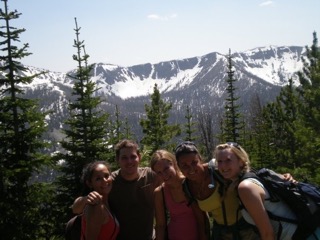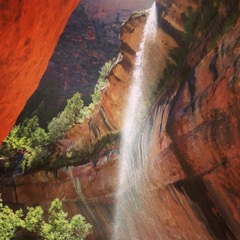
Zion National Park (Megan Reynolds)
“Here is your country. Cherish these natural wonders, cherish the natural resources, cherish the history and romance as a sacred heritage, for your children and your children’s children.” - Theodore Roosevelt, 1906
On August 25, 2016, the National Park Service (NPS) will celebrate its 100th anniversary. To commemorate America’s national parks and the committed men and women who have protected them over the past century, I encourage you to plan a trip to one of these wondrous places. Yellowstone is my personal favorite with its multicolored geyser basins and its 1,300-mile trail system, but you also have 57 other equally awesome places from which to choose. Visit findyourpark.com to search for parks by state, browse centennial events, and discover new outdoor experiences.
Once you have decided on your destination, all you need to do is set a date, pack your bags, and hop in the car, right? Well, not so fast. There are a few things you should know before you lace up your hiking boots.
1. The national parks are wild and often dangerous.
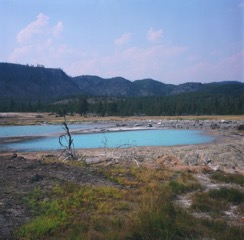
Yellowstone National Park (Eric Payne)
On August 7, 2015, a 63-year-old man was found dead after being mauled by a mother grizzly bear in Yellowstone National Park. He was an avid hiker who had worked in the park at a medical clinic. Even with knowledge of the area, he failed to follow safety protocol: He was hiking alone without bear spray.
I tell you this story not to discourage you from hiking, but to remind you that you must do so at your own risk. The national parks are not theme parks; they are not man-made attractions that were constructed with your safety in mind. The National Park Service has worked hard to maintain the natural habitats of the parks, which means you are essentially walking into the wild world of our ancestors. Yes, there are paved walkways and safety railings in tourist-heavy sections of the parks, but that doesn’t mean that you should let your guard down. To protect yourself, memorize the following:
Animals in their natural habitats will often see you as a threat. Before you leave for your park adventure, research the native species that reside there and learn how to handle and avoid encounters with those that are dangerous. Bears, mountain lions, bison, alligators, elk, poisonous snakes and spiders, wolves, moose—all have the potential to kill you. Never approach these animals. It is not worth risking your life to take a picture for Instagram. If you are in your car and spot a wild animal, do not beep your horn or get out. If you are hiking, make loud noises as you turn a bend or move into a different landscape (meadow to forest, for example). You want to make your presence known so that you do not startle a fearful animal that could become aggressive, especially one with offspring.
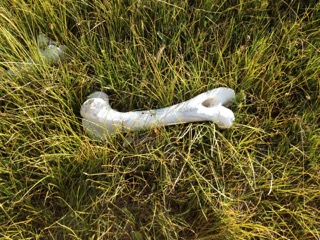
Backcountry of Yellowstone National Park (Megan Reynolds)
Your food and toiletries smell amazing. If you plan on camping at some point during your park visit, avoid keeping anything with a strong scent in your tent. You do not want a raccoon or rat chewing a hole through your temporary home, and you definitely don’t want a hungry bear sniffing you out. If you leave anything outside on a picnic table, know that something will investigate it at best, devour it and search for more at worst. If your car is nearby, pack everything, including your deodorant and midnight snack, into your trunk before you go to bed. I do not recommend backpacking unless you are accompanied by someone who is experienced. However, if you do plan on going, buy and learn how to use a bear bag to keep your food and scented items out of reach. In bear-inhabited areas, follow these strict guidelines for setting up backcountry campsites.
2. Hiking requires a lot of preparation.
Hiking is a wonderful way to get away from the throngs of tourists and experience the peaceful solitude and grandeur of a national park. However, it should not be taken lightly. As a hiker, you should always be prepared for a few worst-case scenario situations: getting lost, getting hurt, or getting caught in unpredictable weather. It’s better to be overly prepared than to compromise your safety on the trail.
Visit the ranger’s station or the visitor’s center. Before you embark on a hiking adventure in a national park, always stop by a ranger’s station or visitor’s center in the area to learn about trail conditions and closures. There, rangers and park employees can recommend trails that are appropriate for your level of experience. They can also give you guidelines for what, at minimum, you should carry in your pack.
Bring a buddy. Strength in numbers! You and one of your friends can make a lot more noise than you alone. That’s important when alerting animals of your presence. Also, if you were to get hurt, a friend could help you back to safety or search for assistance.
Pack the necessities. Every hiker, no matter his or her location, should carry the following items:
- Water: Water guidelines will vary depending on the region, so check your park’s website to research how much you will need. In the desert of Joshua Tree, for example, you should carry two gallons of water per person per day for strenuous trips. Do not rely on streams as a water source (they can carry harmful bacteria) unless you pack and know how to use a water purifying system.

Avalanche Peak Trail, Yellowstone National Park (Megan Reynolds)
- Food high in carbohydrates and protein: Consider trail mix, dried fruit, jerky, and PB&J as lightweight options to sustain your energy throughout the day.
- Sunscreen and bug repellent: Sunburns and bug bites are not just a nuisance; they can potentially be very serious and cause major health issues. It’s best to avoid them altogether by layering on the lotion and spray. The Center for Disease Control recommends using a bug repellent with at least 20% DEET to protect against tick- and mosquito-born illnesses. It is also important to thoroughly check your hair and skin for ticks throughout the day and to remove them immediately. Click here to learn the best method for extracting ticks from your body.
- A first aid kit: When you are walking on uneven terrain or scaling up rocky surfaces, it’s easy to cut yourself. Carry antibiotic ointment and bandages to protect potential wounds.
- An extra pair of socks and blister treatment: Both can save the day if your feet get wet or you are breaking in new hiking boots.

Joshua Tree National Park (Megan Reynolds)
- A warm hat and feet and hand warmers: Even at night in the desert, it gets cold. In areas of high elevation, temperatures can drop significantly at sunset or as you climb above the treeline. Don’t be fooled by the hot weather at the onset of your hike. You want to be prepared if—knock on wood—you get lost and have to spend a night on a mountain. Worst-case scenario aside, a hat may come in handy on a windy summit.
- A rain jacket and rain pants: Storms can blow through with little or no warning when you are on the trail. Even if you are not in areas that frequently get rain, a rain jacket and rain pants can double as extra lightweight layers for warmth.
- A map of the area and a compass: Learn how to use them. It’s likely that your cell phone will have spotty service in the parks, so navigation apps won’t help you if you lose your way. Also, a detailed trail map is handy when you come to a trail intersection and need to decide which fork to take to your destination. You can buy a trail map at the visitor’s center before you head out.
- A flashlight: Don’t get stuck on the trail after dark without one.
Wear protective clothing. A wide brim hat not only protects you from the sun but also from ticks falling from trees. Sturdy boots keep your feet safe from jagged rocks and support your ankles on uneven terrain. Long socks and/or pants shield your legs from snakes slithering in tall grass and from poison ivy or oak. To adapt to temperature changes with ease, dress in lightweight, moisture-wicking layers.
Let others know where you are. If no one has any idea that you are on a trail, no one will know to alert a ranger if you don’t return. Set a time to check in with friends or family members after you finish your hike, and let them know the name of the trail you plan to traverse.
3. Parks have few rules, but they should be followed strictly.

Geyser Safety Warning, Yellowstone National Park (Megan Reynolds)
In May, three Canadian tourists decided it would be funny to stray from Yellowstone’s Grand Prismatic Spring boardwalk and walk onto the surface of the park’s largest hot spring. Onlookers filmed their excursion and alerted park officials. The perpetrators are now facing criminal charges. According to Wyoming K2 Radio, warrants have been issued for their arrests.
These legal actions are justified. At its center, Grand Prismatic Spring can reach temperatures around 189°F. The tourists are lucky they did not join the 20 people who have died in Yellowstone’s thermal features over the years. Furthermore, their footprints disrupted the ecological balance of bacteria that create Grand Prismatic’s colorful pools. By blatantly disregarding park signs, the tourists put themselves, potential rescuers, and the natural environment at risk. To avoid doing the same, follow these rules:
Stay on the trail. Delicate flora and fauna, rattlesnakes, steep cliffs... Trails are there to keep you from stepping on—or over—any of these. They are also your guide back to civilization. If you lose the trail, good luck navigating your way back to your car.
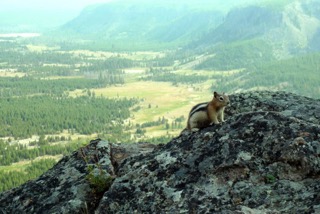
Mystic Falls Trail, Yellowstone National Park (Eric Payne)
Leave no trace. Your sandwich baggie is not an attraction future tourists and wildlife want to encounter. Do you part to preserve the national parks for generations by carefully packing out all of your trash. On the same note, do not take anything natural out of the park. That includes wildflowers, petrified wood, geodes, and other beautiful items you want for your mantle. Everything around you is part of a delicately balanced ecosystem that could be disrupted by your actions.
Pay attention to fire restrictions. Check in with the rangers before you start a campfire anywhere. During particularly dry, windy months, fires may be banned even in campgrounds with fire pits. There also may be restrictions on smoking; a cigarette spark can start a forest fire under the right conditions. If you are allowed to have a fire, buy firewood in the park to prevent the spread of invasive insects and diseases. Always make sure the fire is completely out before you retire to your sleeping bag for the night.
After all of these warnings, I do not want you to be deterred from experiencing the breathtaking beauty of the national parks. This advice is intended to help you stay safe and aware of your environment so that you and generations to follow can enjoy Half Dome, Old Faithful, Mammoth Cave, and so many other incredible wonders our nation has preserved. To celebrate the 100th anniversary of the National Park Service, plan a trip with your friends or family. Once there, I urge you to pause and truly observe your surroundings in silence. Contemplate the gift that has been given to you by the men and women of the NPS, and thank them for their contribution.
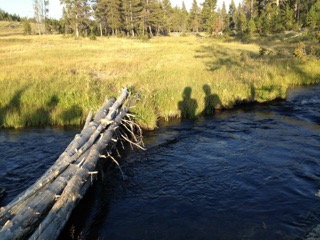
Backcountry of Yellowstone National Park (Megan Reynolds)
"Everybody needs beauty as well as bread, places to play in and pray in, where nature may heal and give strength to body and soul." - John Muir, The Yosemite, 1912
-
Summer Safety Tips for Beach Bums
-
How to Take Advantage of College Orientation
-
Preparing for a Summer Music Festival
-
The History of Flag Day
-
Cómo aprovechar un viaje corto para mejorar un idioma
-
How to Maximize Your European Vacation
-
Summer Side Gigs for Teachers
-
Ten Things You Should Accomplish the Summer Before College
-
Yoga: An Energizing Practice for Beginners
-
10 Lesser-Known National Parks to Visit this Summer
-
Do This, Not That: The Summer Before College
-
How to Succeed in Your Summer Classes

